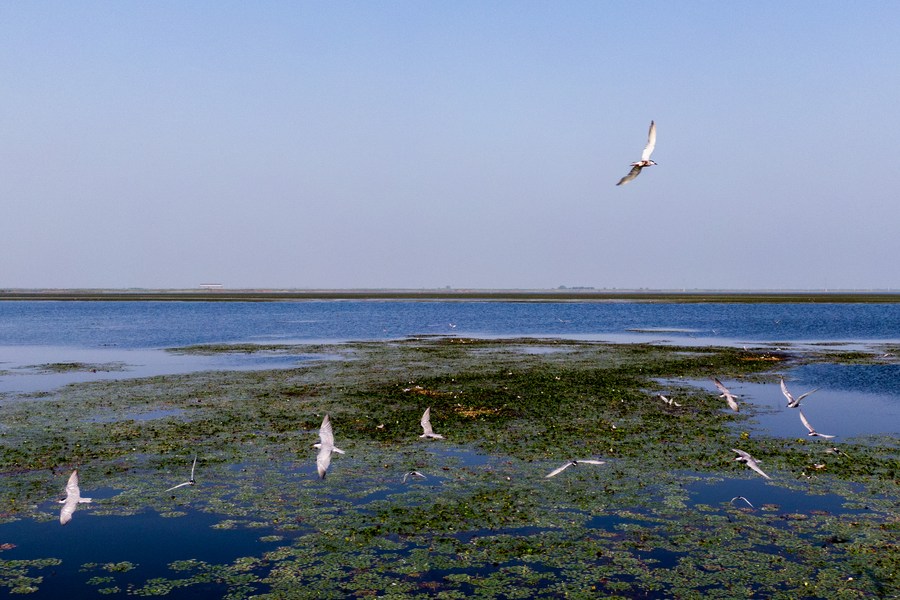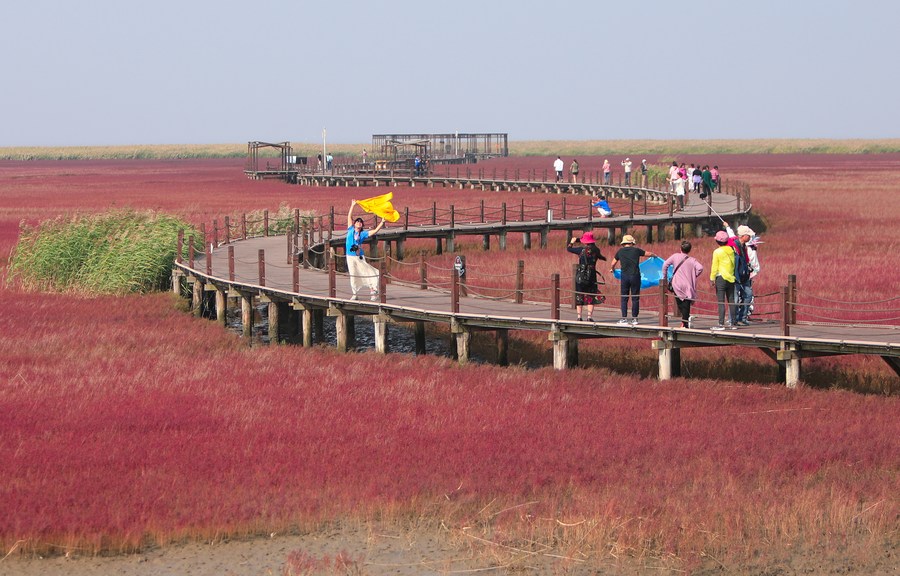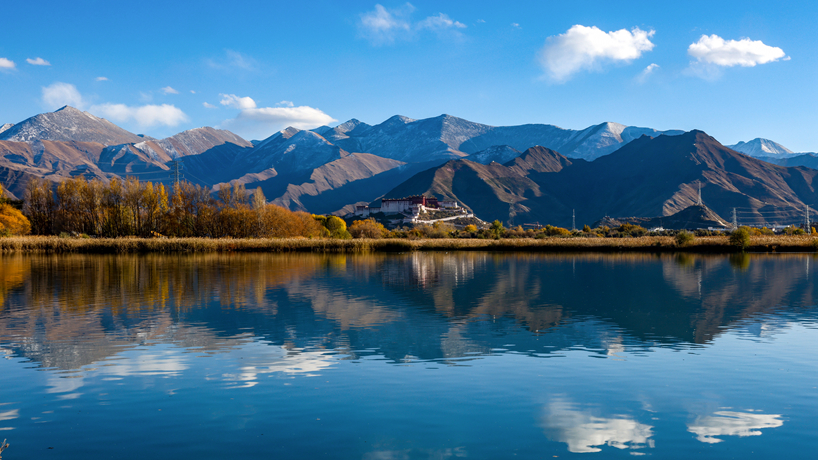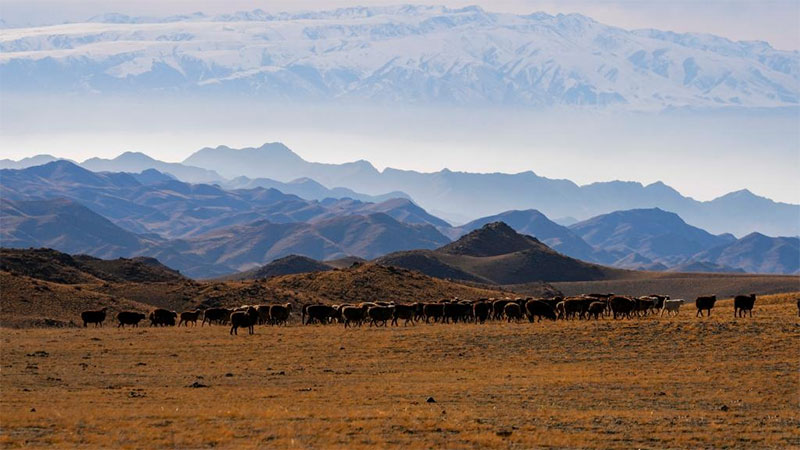Commentary: Wetland protection efforts manifest China's path to modernization

Migratory birds are seen in Chenhu Lake Wetland Nature Reserve in Wuhan, capital of central China's Hubei Province, Aug. 4, 2022. (Xinhua/Wu Zhizun)
WUHAN, Nov. 13 (Xinhua) -- The fact that China has the most "international wetland cities" drives home a crystal-clear message: China firmly upholds that respecting, adapting to, and protecting nature is essential for building itself into a modern socialist country in all respects.
Of all the 43 international wetland cities worldwide, China has 13, including seven newly accredited during the 14th Meeting of the Conference of the Contracting Parties (COP14) to the Ramsar Convention on Wetlands, which is held in China's Wuhan and Switzerland's Geneva.
China's impressive green efforts come at a time when the world's natural wetlands have declined by 35 percent since the convention's adoption in 1971, despite numerous conservation efforts. China's ceaseless endeavors to conserve the wetlands have reflected its distinct path to modernization, where harmony between humanity and nature is much valued.
Over the past decades, China's great green transformation has demonstrated to the world a pragmatic approach that balances environmental protection with economic and social development. The world's largest developing country rejects modernization paths that consume excessive non-renewable natural resources in the process of its modernization.
China, the world's second-largest economy and most populous country, pursues greener modernization and promotes high-quality development in the wetlands conservation cause.
From 2013 to 2021, the country's gross domestic product grew at an average annual rate of 6.6 percent. Apart from economic accomplishments, China has created and restored more than 800,000 hectares of wetlands in the past decade, with the central government allocating 16.9 billion yuan (about 2.35 billion U.S. dollars) for wetland conservation.

This aerial photo taken on Dec. 4, 2021 shows scenery of Yuweizhou wetland park in Nanchang, capital of east China's Jiangxi Province. (Xinhua/Zhou Mi)
Wetlands, dubbed "kidneys of the Earth," are among the top stores of carbon, which means their existence contributes to global efforts to reduce carbon emissions. China's relentless wetlands protection endeavors exemplify its pledge to peak carbon dioxide emissions before 2030 and achieve carbon neutrality before 2060.
From the temperate to tropical zones, from coastal to inland areas, and from plains to plateaus and mountainous areas, wetlands in China are shielded under a system for wetland protection and restoration that incorporates laws and regulations, investigation and monitoring systems.
This year marks the 30th anniversary of China joining the Ramsar Convention on Wetlands. In June, China's Wetlands Conservation Law took effect, marking a new stage of law-based wetlands protection in the country.
"What we've seen with the government of China is really absolutely exciting because there's a move and amplification of legislation," Musonda Mumba, secretary-general of the Ramsar Convention, told Xinhua in a recent interview.
"They have made sure that over 50 percent of the wetlands in China are under protection in one form or another, be it a national park or a community park," she added.
During the conference, China announced it will designate a number of national parks, covering about 10 percent of the country's land area, and incorporate 11 million hectares of wetlands in the national park system.
China's great achievements in wetland protection are of absolute importance not only at the national level, but also at the international level.
China has provided training to 42 developing countries, contributing to global ecosystem governance. The country will promote international cooperation by protecting the four bird migration routes passing China and building an international mangrove center in the south China metropolis of Shenzhen.

People enjoy the scenery of the Red Beach scenic area in Panjin, northeast China's Liaoning Province, Sept. 28, 2022. Various types of wetlands have been found in the Liaohe River Delta. The tidelands there are covered by the suaeda salsa, which turn red on the beach in autumn. (Xinhua/Wang Yijie)
It was also at COP14 that China called for enhancing people's well-being globally by leveraging the role of wetlands in promoting sustainable development, tackling climate change, protecting biodiversity, and delivering more benefits to people around the world.
Heading forward, China will continue to adhere to green development and advance ecological civilization. It will also continue to actively participate in global biodiversity governance, and contribute Chinese wisdom to achieving a global ecological civilization and building a community for all life on Earth.
Photos
Related Stories
- Restoring wetland ecology in oil-producing city
- Experts say China's 30-year wetland protection effective, fruitful
- 7 Chinese cities accredited as int'l wetland cities
- View of London Wetland Centre
- Shenzhen protects wetlands and bird migration routes
- Scenery of Shuanggui Lake national wetland park in SW China's Chongqing
Copyright © 2022 People's Daily Online. All Rights Reserved.









